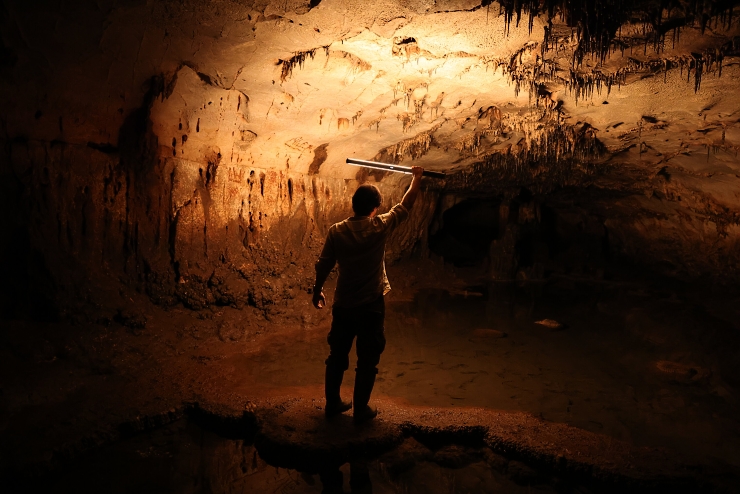Archaeologists discover unique Paleolithic cave art - probably the most important in Europe
Categories: Nálezy nejenom s detektorem v západní Evropě
Over 100 prehistoric clay paintings and engravings have been discovered in the half-kilometre-long Cueva Dones cave near Valencia, Spain. They are at least 24,000 years old and are probably the most important Palaeolithic cave art of this type in Europe.
The cave is a well-known site on the slope of a steep canyon near the village of Millares, which is frequently visited by tourists and explorers. However, until recently, no one had noticed the Paleolithic paintings in the 500-metre high "gallery". The first exciting discovery was only made by researchers from the Universities of Zaragoza and Alicante in collaboration with the University of Southampton in June 2021. A major survey was carried out earlier this year, identifying the site as an important Palaeolithic art sanctuary.
"When we saw the first painted bison, we immediately recognised it," said Dr Aitor Ruiz-Redondo, Associate Professor of Prehistory at the University of Zaragoza in Spain and a researcher at the University of Southampton, describing the initial discoveries. "Although Spain is the country with the largest number of Palaeolithic cave paintings, most of them are concentrated in the north of the country. Eastern Iberia is an area where few of these sites have been documented to date," he added.
The real impact of significance, however, came quite a long time after the initial discovery: "As soon as we started a proper systematic survey, we realised that we were facing great cave art such as that found in, for example, the We were aware of a great deal of cave art in the south of France, in Cantabria or in Andalusia. But in this territory it is a completely unique discovery," explained Dr Ruiz-Redondo.
The research team has so far documented 110 graphic units. According to the study, at least 19 confirmed animal motifs have been found, including lions, horses, bison and deer. The remaining images represent rectangles, wavelets, lines other unidentified paintings. Most were unusually made of clay. The large number of subjects and the variety of techniques make the cave the most important Paleolithic art in the easternMediterranean coast and is probably the cave with the largest number of Palaeolithic motifs discovered in Europe.
"Animals and signs were depicted simply by dragging clay-covered fingers and palms over the walls. The humid environment of the cave did the rest," explained Dr. Aitor Ruiz-Redondo added: "The paintings dried quite slowly, so some of the clay fell off, while other parts were covered with calcite layers that have preserved them to this day."
Also notable is the variation in the technical characteristics of the artworks with different types of engravings and paintings. In addition to the classical simple outlines of figures, there are also figures shaded by scraping "moon milk" (limestone precipitate) on the surface of the walls. This technique is rare in Palaeolithic cave art and previously unknown in eastern Iberia. Equally surprising is the painting technique; the motifs were created by applying red clay to the walls instead of using the usual diluted ochre or manganese powder.
Although clay painting is a known technique from the Palaeolithic, examples of its use and preservation are very rare. At Cueva Dones, however, it is the predominant technique. According to experts, exploration is still in its early stages and there are still many unexplored areas, so it is likely that more prehistoric artworks will be revealed in the coming years.
Roman Nemec
Sources: cambridge.org, phys.org
 detail silné kalcitové vrstvy částečně pokrývající hlavu; b) detail stopy medvědího drápu překrývajícího část prsty tvořených linií.png)
a) detail of a thick calcite layer partially covering the head; b) detail of a bear claw mark overlaying part of the finger-formed lines
 malovaná hlava zubra; b) koňská hlava z hlíny; c) panel s několika motivy malovanými hlínou včetně zvířat a znaků (některé zčásti překryty kalcitovými vrstvami).png)
a) a painted bison head; b) a horse head made of clay; c) a panel with several clay-painted motifs including animals and characters (some partially covered by calcite layers)

two painted horse heads

The partially flooded chamber contains most of the motifs

Cova Dones cave
 ryté vzory b) dvě koňské hlavy vyškrábané do povrchu stěny.png)
a) engraved designs b) two horse heads scratched into the surface of the wall
The article is included in categories: